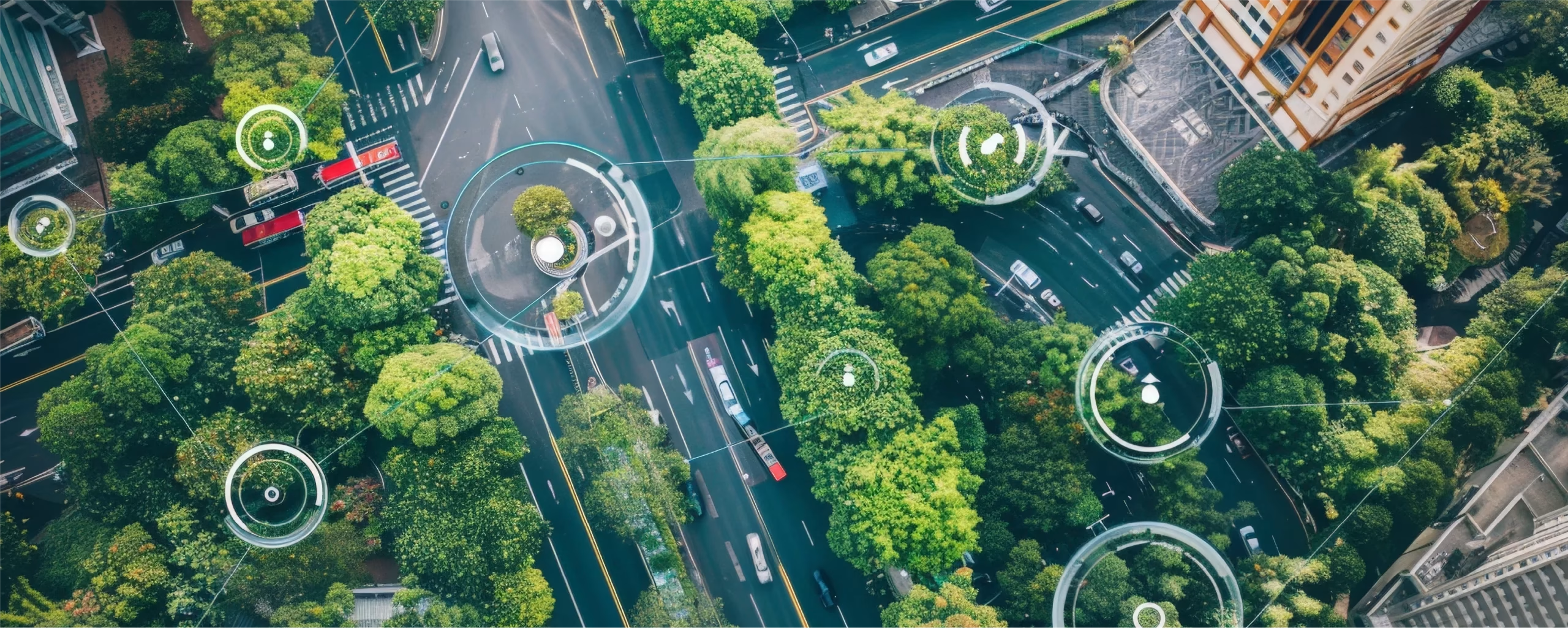As cities grow larger and more complex, the demand for smarter, faster, and more sustainable technologies has never been greater. From traffic lights to trash bins, every part of urban infrastructure is getting smarter—but this intelligence comes at a cost. That’s where AI-accelerated edge computing steps in: a powerful approach that merges the speed of local processing with the intelligence of artificial intelligence (AI).
🚀 What Is Edge AI?
Edge computing means processing data locally on devices near the source (like sensors, traffic cameras, or even street lights) instead of sending everything to a centralized cloud server. When you combine edge computing with AI models, you get Edge AI—real-time, intelligent decision-making right where it’s needed.
Think of it as a brain built into every traffic signal, camera, or energy meter.
🌱 Why Sustainable Smart Cities Need It
Traditional smart city systems often rely heavily on cloud computing. While powerful, this method:
- Consumes significant energy,
- Increases latency (delays),
- Raises privacy concerns due to data being sent to remote servers.
With Edge AI, you solve all of that. Data stays local, responses are lightning fast, and energy is conserved—making cities not just smarter, but greener.
🔍 Real-World Applications of Edge AI in Smart Cities
1. Smart Traffic Management
AI models running on edge devices can analyze real-time video feeds from traffic cameras to:
- Detect congestion or accidents,
- Automatically adjust signal timings,
- Provide updates to navigation apps.
This reduces fuel consumption, travel time, and emissions.
2. Energy-Efficient Buildings
Smart buildings can use Edge AI to:
- Monitor occupancy in real-time,
- Adjust lighting and HVAC systems dynamically,
- Optimize power usage based on patterns.
It’s like giving buildings the ability to “breathe” with the flow of people.
3. Waste and Water Management
Sensors powered by edge AI can detect:
- Full trash bins,
- Water leakage,
- Toxic pollutants in real time.
This enables faster response, reduced wastage, and improved urban hygiene.
4. Public Safety
Edge AI in CCTV cameras can detect:
- Suspicious activities,
- Fires or hazardous events,
- Unauthorized access in restricted zones.
All without needing constant human monitoring or delayed cloud processing.
⚙️ Key Technologies Behind the Scenes
✅ AI Hardware for the Edge:
- NVIDIA Jetson
- Google Coral
- Intel Movidius These chips are designed to run machine learning models directly on devices.
✅ 5G Networks:
Ultra-fast, low-latency 5G helps connect edge devices reliably and in real time—crucial for fast decisions.
✅ Machine Learning Models:
Lightweight, optimized AI models like YOLO (for object detection) or TinyML frameworks are used on edge devices.
🔒 The Privacy Advantage
One of the biggest benefits of edge computing is privacy. Since sensitive data (like faces or car plates) is processed locally, there’s no need to send everything to the cloud. That means:
- Less risk of data breaches,
- Better compliance with privacy regulations (like GDPR).
🌍 Sustainability Impact
Sustainability isn’t just about saving power—it’s about using intelligence to do more with less. By embedding AI into edge devices:
- Energy is conserved,
- Infrastructure lasts longer,
- Urban systems become more adaptive and resilient.
Cities using edge AI can reduce their carbon footprint while improving quality of life for millions.
📈 Challenges Ahead
Of course, it’s not all smooth sailing. Some of the current challenges include:
- Scalability: Deploying edge devices across an entire city is expensive.
- Security: Edge devices can be targets for cyber attacks.
- Model Optimization: Running AI on tiny chips requires heavily optimized code.
But ongoing research is solving these problems step-by-step.
🧠 Conclusion
AI-accelerated edge computing is more than just a buzzword—it’s the backbone of the smart, sustainable cities of the future. By processing data locally and acting instantly, Edge AI enables faster responses, lower energy use, and safer urban environments.
As we move deeper into the age of automation and urban growth, embracing intelligent, efficient, and ethical technology will be key to building cities that thrive—not just survive.






